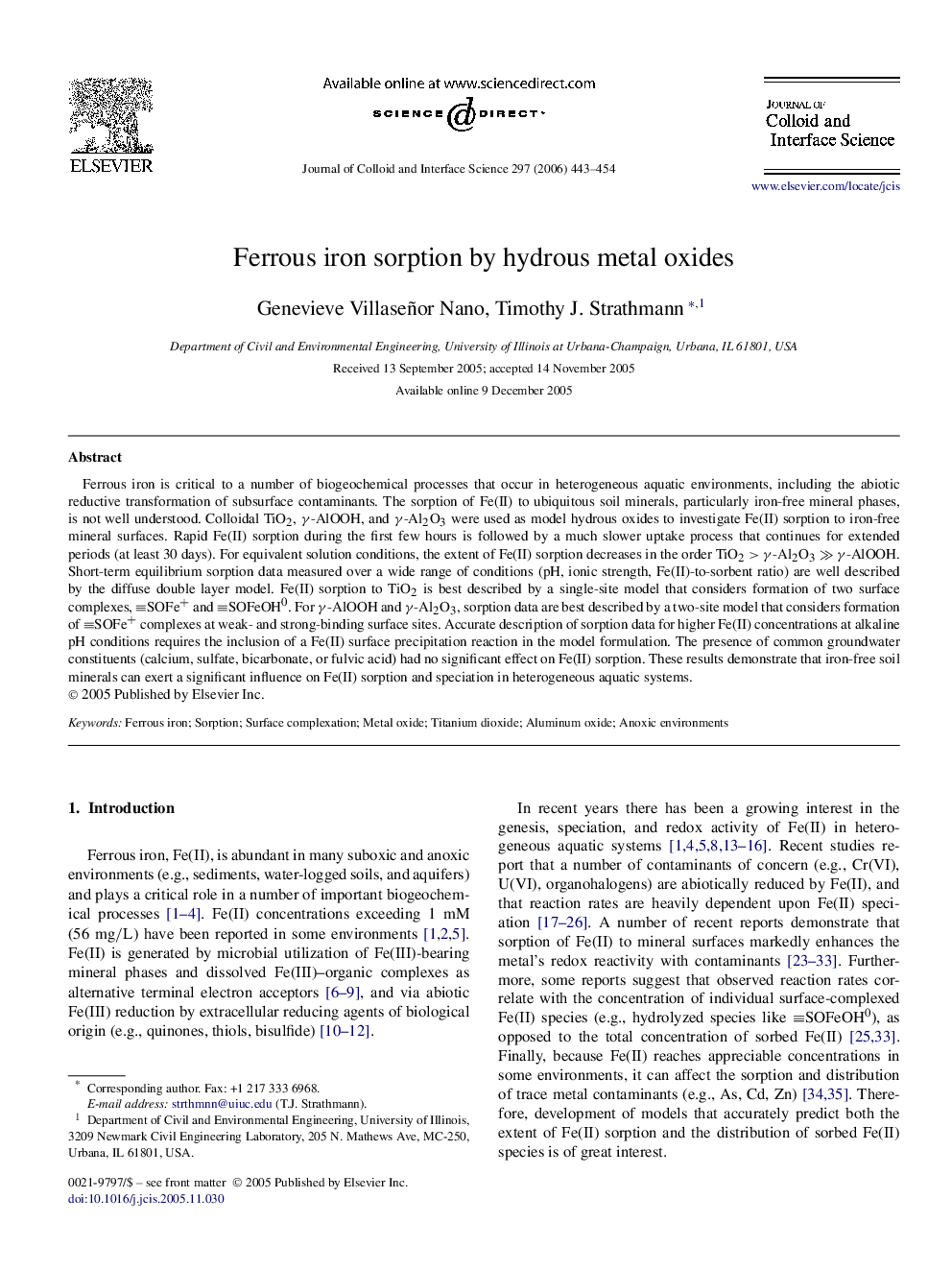| کد مقاله | کد نشریه | سال انتشار | مقاله انگلیسی | نسخه تمام متن |
|---|---|---|---|---|
| 613211 | 880718 | 2006 | 12 صفحه PDF | دانلود رایگان |

Ferrous iron is critical to a number of biogeochemical processes that occur in heterogeneous aquatic environments, including the abiotic reductive transformation of subsurface contaminants. The sorption of Fe(II) to ubiquitous soil minerals, particularly iron-free mineral phases, is not well understood. Colloidal TiO2, γ-AlOOH, and γ-Al2O3 were used as model hydrous oxides to investigate Fe(II) sorption to iron-free mineral surfaces. Rapid Fe(II) sorption during the first few hours is followed by a much slower uptake process that continues for extended periods (at least 30 days). For equivalent solution conditions, the extent of Fe(II) sorption decreases in the order TiO2 >γ-Al2O3 ≫γ-AlOOH. Short-term equilibrium sorption data measured over a wide range of conditions (pH, ionic strength, Fe(II)-to-sorbent ratio) are well described by the diffuse double layer model. Fe(II) sorption to TiO2 is best described by a single-site model that considers formation of two surface complexes, SOFe+ and SOFeOH0. For γ-AlOOH and γ-Al2O3, sorption data are best described by a two-site model that considers formation of SOFe+ complexes at weak- and strong-binding surface sites. Accurate description of sorption data for higher Fe(II) concentrations at alkaline pH conditions requires the inclusion of a Fe(II) surface precipitation reaction in the model formulation. The presence of common groundwater constituents (calcium, sulfate, bicarbonate, or fulvic acid) had no significant effect on Fe(II) sorption. These results demonstrate that iron-free soil minerals can exert a significant influence on Fe(II) sorption and speciation in heterogeneous aquatic systems.
Iron (II) sorption to hydrous metal oxide surfaces is well described using the generalized diffuse double layrer (DDL) surface complexation model.Figure optionsDownload as PowerPoint slide
Journal: Journal of Colloid and Interface Science - Volume 297, Issue 2, 15 May 2006, Pages 443–454